
Physics Program Labs
In mid-2018, the Physics Program moved to a new $65.7 million STEM and Classroom Building from the Bayou Building. The new building offers 121,000 square feet of space for students and faculty. Specifically for the Physics Program, the building offers three physics teaching labs and four research labs—one for biophysics, one for applied physics, one for computational physics, and one for materials science.
The STEM and Classroom Building also houses advanced scientific tools in teaching labs and other program lab spaces, commonly known as shared facilities. Students and faculty also have access to a machine shop, a computer lab, and meeting facilities for physics research groups. Major research labs allocated for physics research in different areas are listed below.
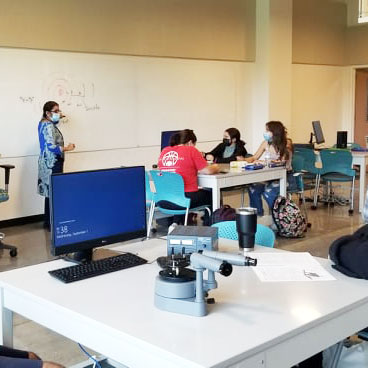
Applied Physics/Materials Science Research Lab
The applied physics/materials science research at UHCL involves materials or samples preparation, characterization, and application testing in a designated lab. This research lab facility offers various spaces for materials synthesis. There are separate lab spaces for nanomaterials synthesis by wet chemistry and chemical vapor deposition methods. Some of the nanomaterials characterization tools are located in same labs, but the rest of the equipment are located in the Advanced Teaching Lab. This includes a scanning electron microscope, an atomic force microscope, radio frequency generators, a vacuum system, and physical property measurement system.
Phenom ProX Scanning Electron Microscope
The Phenom ProX Scanning Electron Microscope, sophisticated with Energy-Dispersive Spectroscopy Analyzer, allows the imaging of micro/nanostructured materials. It provides information on the chemical nature of bulk samples.
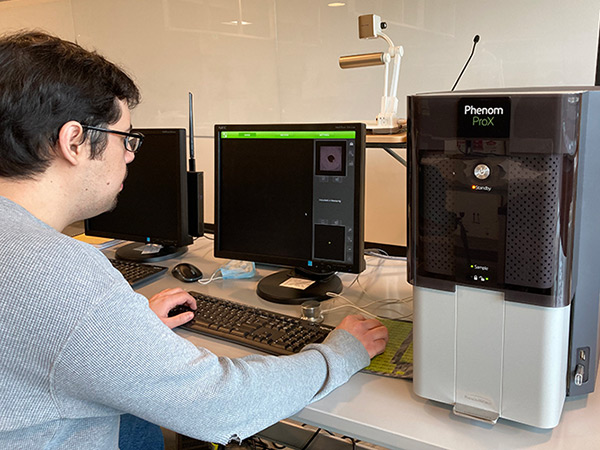
Park NX10 Atomic Force Microscope
The Park NX10 Atomic Force Microscope allows the imaging of microstructures and their topography/measurement of their thicknesses. It can also be used for the measurement of some electronic and magnetic properties of materials.
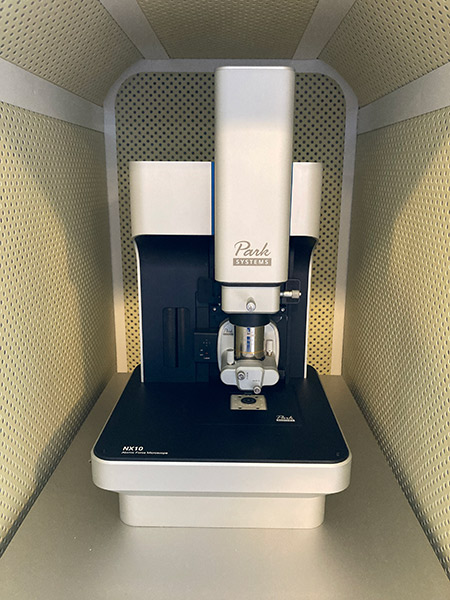
Bruker XRD Powder Diffractometer
The Bruker XRD Powder Diffractometer provides information on the crystal structure of the samples.
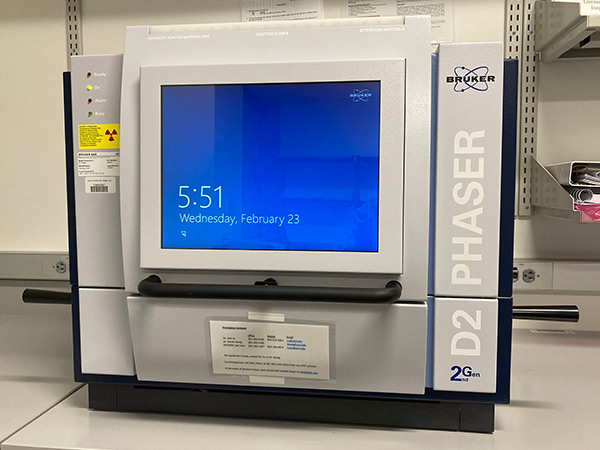
Thermo DXR2 Raman Spectrometer
The Thermo DXR2 Raman Spectrometer allows the characterization of non-polar molecules and materials based on the molecular or crystal vibrational information.
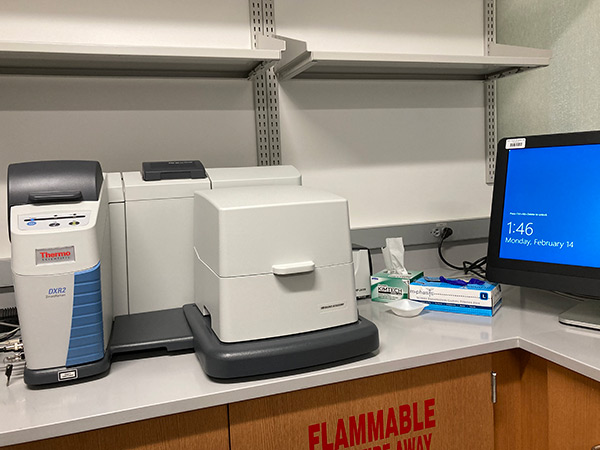
Physical Property Measurement System
The Physical Property Measurement System allows the measurement of electrical and magnetic properties from room temperature to liquid nitrogen temperature. (77 K).
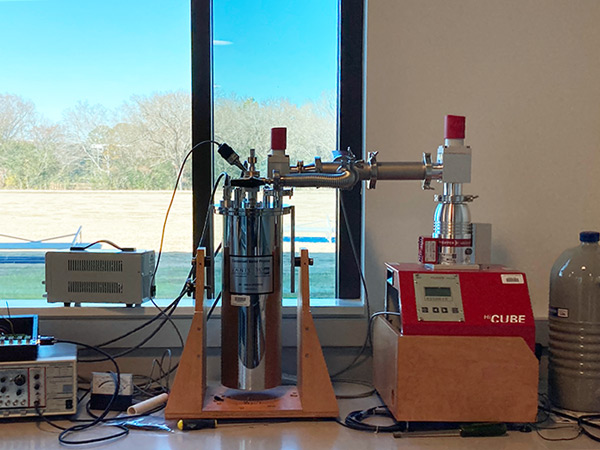
Radio Frequency Generator with High Vacuum System
The Advanced Physics Lab at UHCL has two 13.56 MHz RF generators capable of producing 2 KW of RF power each. These are mated with a matching network and vacuum system so they can create a plasma at both air pressure and in a vacuum. This equipment can be used for several areas of research, such as testing how materials “weather” in the environment of space using an ion beam, studying how hypersonic aircraft function in an ion-filled environment, or studying the stability of a plasma for fusion research. The plasma produced in this system can also be used for surface cleaning and materials etching for materials science research.
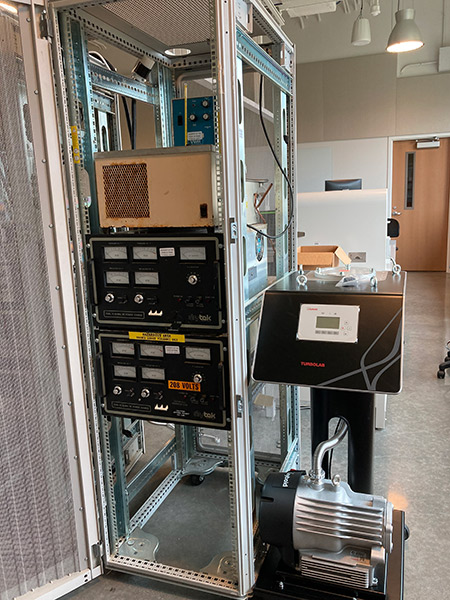
First Nano Chemical Vapor Deposition Reactor
The First Nano Chemical Vapor Deposition Reactor is used for the deposition of several nanomaterials. It is an automated system that runs with the custom-set program for materials deposition recipes.
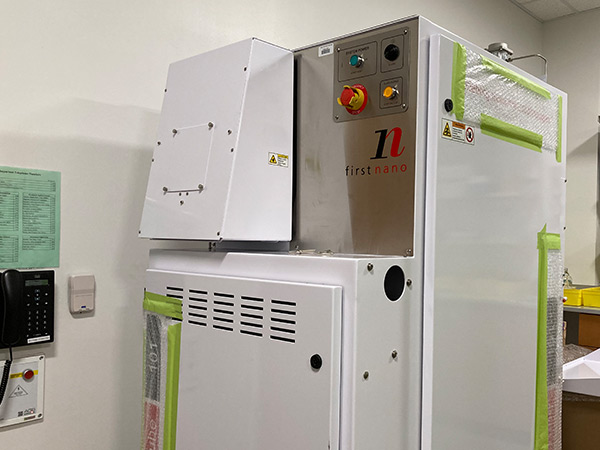
DC Sputter Coater
The DC Sputter Coater is used for coating of the target surfaces or deposition of the thin film of metals, such as gold.
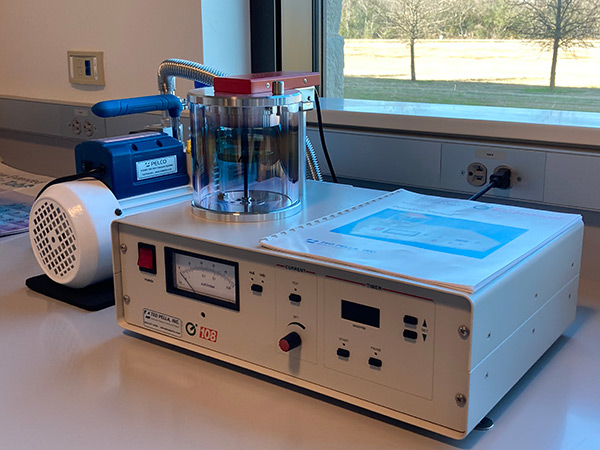
VTC-50 A Spin Coater
The VTC-50 A Spin Coater allows the coating of nanomaterials or polymers to form thin films on intended substrates.
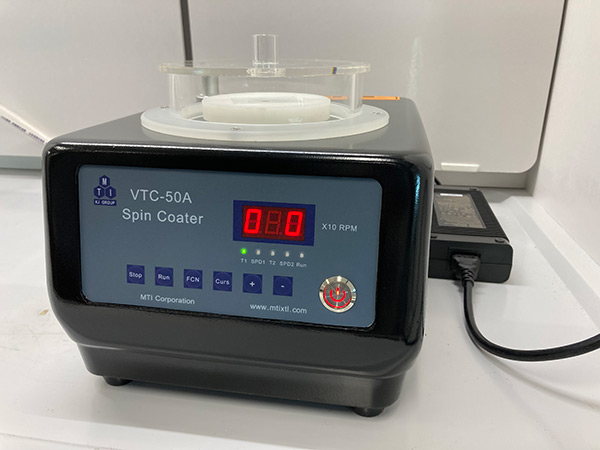
Beckman Preparative Ultracentrifuge
The Beckman Preparative Ultracentrifuge is used for gradient separation and cleaning of nanomaterials and molecules in solution phase.
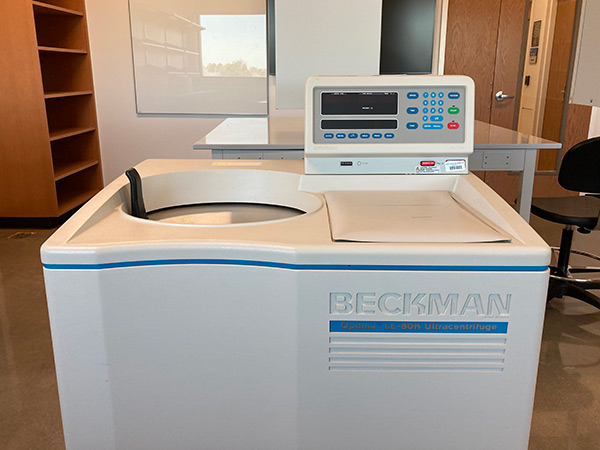
Other Equipment
- Oxygen Plasma Etching System
- UV-Visible Spectrophotometer
- FTIR/ATR Spectrometer
Biophysics Research Lab
The Biophysics Research Lab is sophisticated with the sample preparation tools and other necessary scientific instruments, such as optical microscope and autoclave equipment. A specialized setup for applying a weak magnetic field to living microorganisms is also available in this lab. Further characterization is performed via the electron microscope and atomic force microscope, available in the Advanced Teaching Lab.
Weak Magnetic Field Source
A weak magnetic field source to study the bacterial growth
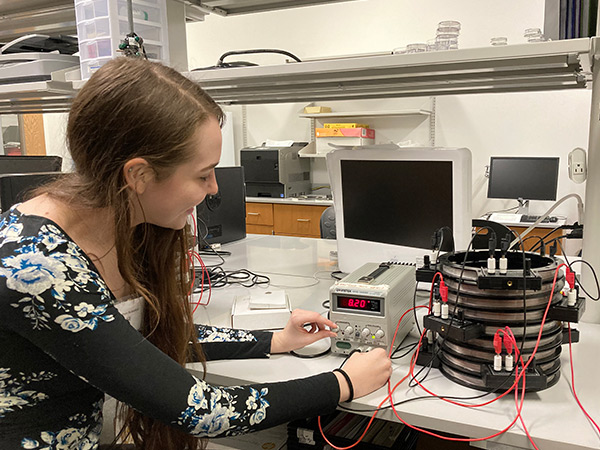
Autoclave Equipment
High-temperature cleaning equipment to study bacteria growth
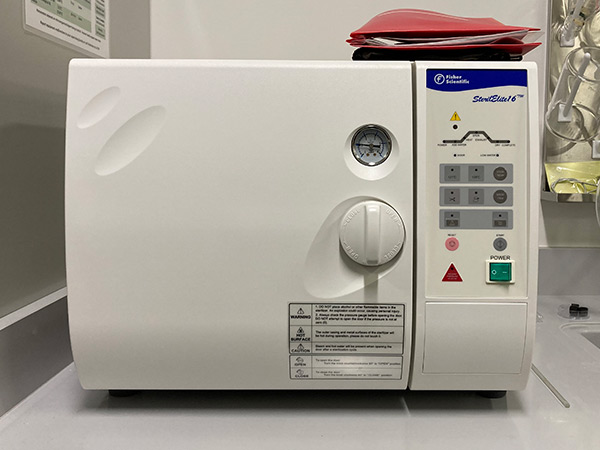
Optical Microscopes
Allows optical imaging with magnifications up to 100 times for initial study.
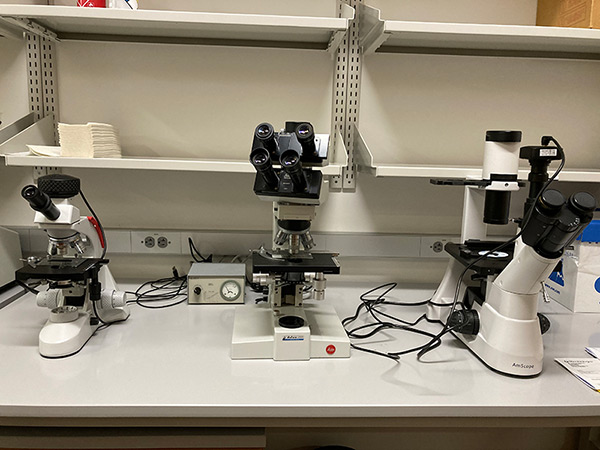
Theoretical Astroparticle Physics Lab
The theoretical astrophysics group mainly uses quantum statistical physics to study astrophysical systems. It uses the calculations of physical parameters of a many-body system using real-time formalism mainly. This lab has some computers with relevant software installed in them for theoretical astroparticle research.
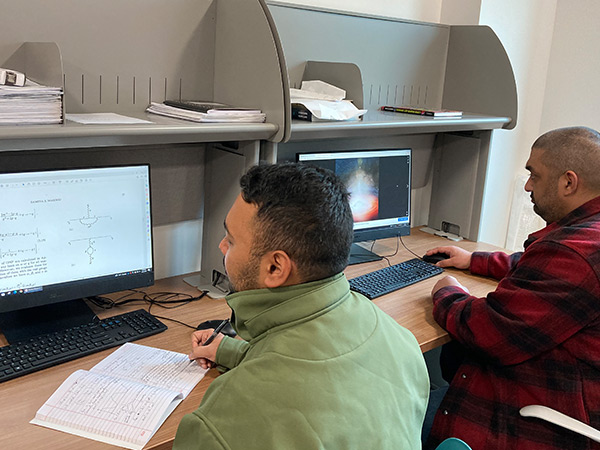
Computer desks are available for theoretical physics research students to work on their individual computers. A workstation is available in the same room with a big conference table for discussions.
Computational Physics Research
The Physics Program at UHCL maintains a High-Performance Computing (HPC)/Computational Laboratory facility, designed to train undergraduate and graduate students to perform basic research and develop software for HPCs. Our computational cluster, Singularity, serves as a test-bed for HPC research codes that are designed to run on some of the world's fastest supercomputers. The computational cluster is composed of four custom-built compute nodes, a head node and a storage node. The Computational Lab consists of 10 PCs. UHCL students also have access to supercomputer capabilities through the facilities available at the University of Houston's Center for Advanced Computing and Data Center (CACDS).
This facility is currently being used for conducting research in two different areas: computational cosmological physics and computational materials science.
Computational cosmological physics research has involved code development for General Relativistic Magnetohydrodynamic (GRMHD) simulations, plasma rocket (VASIMR) simulations, and Radiation Shielding simulations. For computational materials science research, nanomaterials are modeled and optimized, and first principles calculations are implemented to reveal their electronic, magnetic, optical, structural, mechanical and thermal properties. They are screened, and realistic material simulations are performed to pave the way toward developing new materials with superior properties.
Computer Cluster
This facility is used for both computational cosmological physics and computational materials science research.
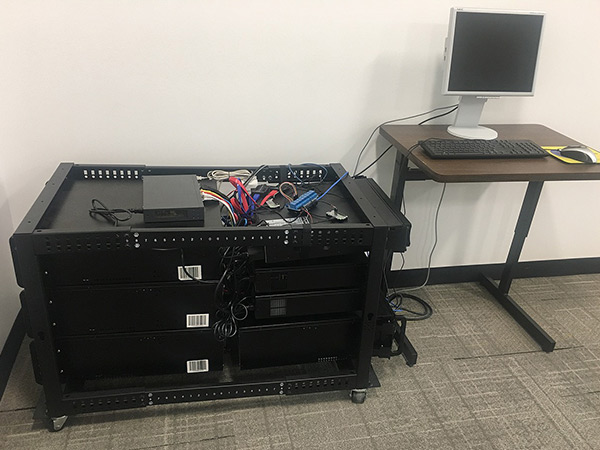
Partner Institutions
University of Houston: Research Computing Data Core
Sabine is a production machine at CACDS. It is a shared campus resource housing public and private nodes in a condominium model with shared access to GPU and storage resources. The cluster contains 5704 CPU cores on 169 nodes, 12 GPU components, and 725 TB of disk storage. Opuntia is a new shared resource provided by the CACDS. Opuntia contains 1,860 cores within 80 HP Proliant SL 230 compute blades (nodes), two HP Proliant SL 250 Xeon Phi blades, two HP Proliant SL 250 Nvidia K40 GPGPU blades, and one HP Proliant DL 380 login node. The system is also equipped with three large memory nodes - one HP Proliant DL 580 with one TB of main memory and two HP DL 560 each with 512 GB of main memory. Each compute node has 64 GB of memory, and the login/development node have 64 GB. The system storage includes a 384 TB shared file system and 85 TB of local compute-node disk space (~1 TB/node). Opuntia also provides access to five large memory (1TB) nodes and eight nodes containing two NVIDIA GPU's, giving users access to high-throughput computing and remote visualization capabilities, respectively. A 56 Gb/s Ethernet Mellanox switch fabric interconnects the nodes (I/O and compute). The cluster currently runs Rocks 6.1 and Red Hat Enterprise Linux 6.6.
NASA Johnson Space Center (JSC)
NASA JSC leads NASA's flight-related scientific and medical research programs. JSC maintains comprehensive laboratories for the study of material properties through the Astromaterials Research and Exploration Science (ARES) office. ARES research covers essentially all the physical sciences (physics, chemistry, astronomy, geology), plus biology, mathematics, computer science and engineering. The Astromaterials Acquisition and Curation Office is responsible for the curation of extraterrestrial samples from NASA's past and future missions from the Moon, asteroids, comets, the solar wind, and the planet Mars. The One-Bar Experimental Petrology Laboratory conducts ambient pressure, high-temperature experiments on a range of astromaterials and simulants. The Electron Beam Laboratories includes two scanning electron microscopes (SEM), two transmission electron microscopes (TEM), one electron microprobe, and one dual-beam focused ion beam (FIB) instruments. The Experimental Impact Laboratory (EIL) contains three different accelerators, which can launch a variety of projectiles at targets intended to simulate materials on the surfaces of the solid bodies of the solar system. Impacts typically occur under near-vacuum conditions (pressures well below 1 torr). The Fourier Transform Infrared Laboratory is used to determine qualitative and quantitative features as well as structural characteristics of organic and inorganic molecules in solids, liquids and gases and on surfaces. The Inductively Coupled Plasma Mass Spectrometry (ICP-MS) laboratory is equipped with a Thermo Fisher Element XR magnetic sector ICP-MS and a New Wave Research UP193 Solid-State laser ablation system. The Mars, Moon, Meteorite Evolved Gas Analysis (M3EGA) Laboratory conducts thermal and evolved gas analyses of volatile bearing minerals (e.g., carbonates, sulfates, perchlorates, oxyhydroxides, phyllosilicates). Analyses conducted in this laboratory are compared to similar data collected during planetary missions to verify the presence and abundance of such minerals on other planetary bodies. The Planetary Dust Lab focuses on examination of non-terrestrial soils to determine their particle size distribution and specific surface area. A HORIBA Jobin Yvon High-Resolution Raman Microprobe is used to provide detailed characterization of astromaterials, supporting a wide range of investigations that include mineralogy, crystallinity, fluid inclusions, organic, and inorganic geochemistry. In addition, JSC houses a Spectroscopy and Magnetics Laboratory, an X-Ray Diffraction Laboratory and a collection of thousands of well-characterized natural rocks and minerals samples, as well as synthetic minerals and glasses. UHCL's partnership with JSC was formally expressed through a Space Act Agreement.
Ad Astra Rocket Company
Ad Astra has a complete research and design facility for the development of the VASIMR plasma rocket. Facilities include mechanical design, 3D CAD, CAM, and FEA Analysis, specialty machining to aerospace standards, large scale vacuum facilities, cryogenics, magnetic field environments, circuit-board and electrical fabrication, radio-frequency electrical engineering, and high power plasma sources. Ad Astra also has resources and expertise to perform computer modeling of space trajectories (orbital mechanics), heat and fluid flow, RF-powered plasmas and plasma jets, and magnetic systems and shielding.






